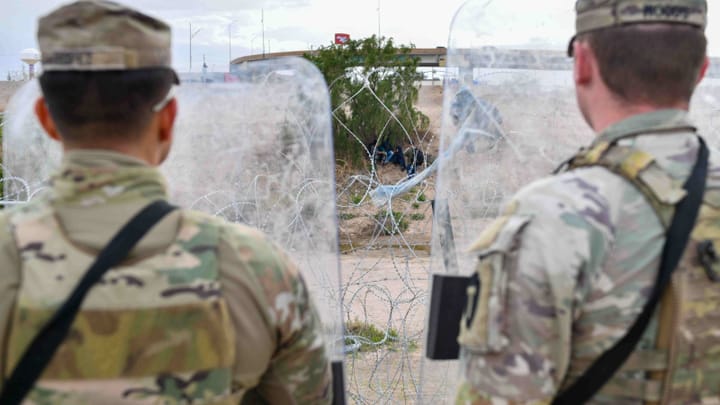Reflections on the US-Mexico Border

The border between the U.S.A. and Mexico is 1,954 miles long.
It’s the 10th-longest border in the world, stretching from the Gulf of Mexico in the east to the Pacific Ocean in the west.
It’s the most frequently-crossed border in the world.
I’ve crossed the U.S.-Mexico border over 300 times.
I’ve crossed it on foot. I’ve crossed it in a car. I’ve crossed it in a bus.
The border is an exciting place. It’s also a dangerous place.
Even when the border was better managed than it is now, it was a risky area.
Many people have legitimate purposes for crossing the border.
But, by its very nature, a border attracts those who are attempting to escape, evade, or get away with something.
Once, I almost got jumped and robbed on the Mexican side of the border. I’m not certain if my would-be-assailants were Mexicans or Mexican-Americans. But it appeared that they were about to do something so I took off running for the border and got away from them.
On another occasion, on the Mexican side of the border, I ran into an American who was on the lam from the law in the U.S. He had fled to Mexico and was bragging to me about how he’d escaped the U.S. and abandoned his family. He seemed proud of it. This guy enjoyed telling me this, even though he’d just met me and didn’t know who I was. I could have been an undercover federal agent for all he knew.
When my family and I would cross the border in our car, sometimes we’d wait in a long line of vehicles, for hours on end.
When we arrived near the checkpoint on the U.S. side, I would give my two young sons the same lecture: When we are being interrogated by the agent, be serious. Don’t answer more than he asks. Tell the truth. Don’t be funny. It’s not the time for that.
I would drive up to the checkpoint and show our paperwork. The agent would open the side door and talk directly to my young sons, asking them if my wife and I, seated in the front, were really their parents.
Now why would they ask that?
Because there are individuals who will cross with other people’s children, using them as props.
This was when the border was still generally under control, though still porous.

For decades, our border was too porous. There were too many in our ruling class who just looked the other way.
But our previous president, Donald Trump, was able to improve U.S. control of the border, and he deserves credit for that.
The current administration, on the other hand, has reversed Trump’s gains.
What we currently have at the border is an invasion.
It’s not a conventional invasion, in which one country invades another and the invaded country fights back.
This is an invasion encouraged and managed by the government of the country being invaded, by our government.
How do you fight that? You have to change the policies.
Hordes of migrants and illegal aliens from around the world cross the border from Mexico into the United States.
Some are sent back, but many are allowed to stay in the country. Some are even transported at taxpayer expense deeper into the U.S. interior.
Those who don’t make it through hang around on the Mexican side to try again later.
In all the chaos, there are also many “gotaways” who just head on into the country on their own.
How can an average American citizen keep up with all this?
That’s where BorderHawk.news comes in.
BorderHawk.news is an aggregation site, frequently updated, featuring news items about illegal immigration.
On BorderHawk.news, you can see how bad things have gotten on our border.
However, being informed, as important as it is, is not the end.
Our next step, after seeing how bad it’s gotten, is to do what we can improve the situation.
We have to join with other concerned Americans and turn this situation around. As soon as possible.
You can find more of Allan Wall's work at his website.
Visit BorderHawk.news




